Food for Thought
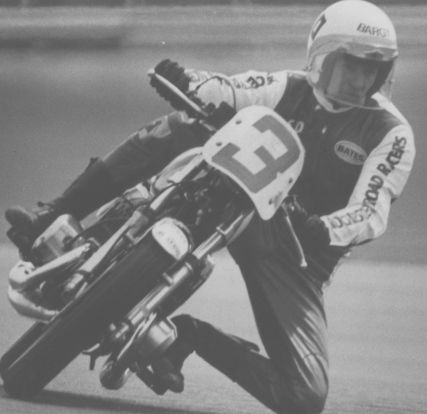
Over the years, connected with various athletic sports, I have noticed a common thread running through the athletic community. I personally participated in four of the sports show here.
There are numerous athletic sports where the competitors have to change direction quickly and precisely to be competitive. Many of these sports require the athletes to use their body weight and posture (BP) to help negotiate the turn. I have notice that the majority of athletes in different types of competition have the same key points of BP.
The following commentary shows some examples of the athletic Body Positions used while turning. I’m comparing their BPs as just a “Food for Thought” exercise about BP, Centers of Mass, Eye position ETC.
There is even an example in nature using the same dynamics. We will then compare these to motorcycle BP theories.
There will be some, who, will vehemently disagree with what is covered here. But, read on and
Draw Your Own Conclusions!
What to look for
In these photos, please notice the four key points,
- Point of contact with the surface. Shown as a RED dot.
- The position of the “Center of Mass” of the athlete’s body. Shown as a YELLOW dot.
- Eye position and orientation to the horizon. Shown as a BLUE line.
- The YELLOW lines showing the relationship between the first three point.
The first example is of a snow skier. A show skier is often use, by coaches, as an example of foot peg weighting. Which is one of the many misunderstood high-performance motorcycle techniques.
First, notice the location of the ground “Contact Point”. It is where the majority of the weight of the skier contacts the ground. It is also the point of “Steering and Ballance Control”. Now, if you relate this to a motorcycle, the contact point (contact patch) would represent where the front tire contacts the ground and not where the foot peg weight would be.
Second, notice where the skier’s Center of Mass is located. This is the typical location of most human beings, at or near the stomach or navel. This cannot be changed with a change of posture.
Third is an often-overlooked important point of athletic posture. It is the Eye Position. The skier’s eyes are level with the horizon. We are human beings that have evolved looking at the world and gathered information with our eyes level. This how we get good clear information about our surrounding. Not with our heads tipped. After all we are not “Flounder Fish” that evolved sideways.
When I first started riding and racing, I tried the head tipped posture, like many others were doing at the time. I found that I didn’t like the vague and imbalanced feeling. So, I adopted the eyes level style. On a side note, this is also when I noticed that the riders who rode with their head tipped, had a lot higher incidence of crashes than those who rode with heads/eyes level.
Fourth, Notice the YELLOW lines showing the relationship between the main points.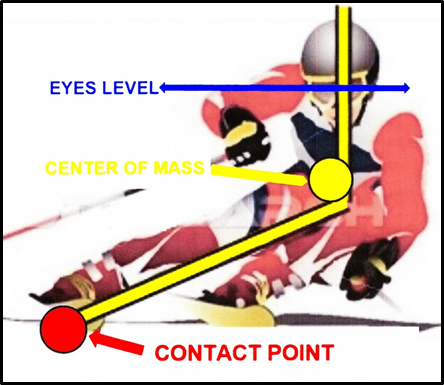
The next example of athletic competition is the ice skater. Notice the four key point as they, are shown here. You will see that they are, for the most part, exactly the same as the snow skier.
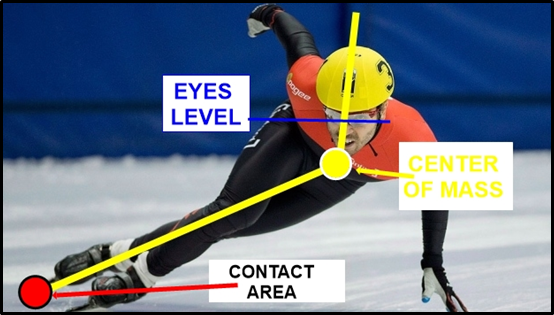
The third example is of a water skier. This was taken from a professional’s training manual. The colored lines were added by me. Notice that once again the four point are basically the same as the previous two examples. Before I found motorcycle road racing, I was serious considering going into pro Slalom water ski competition.
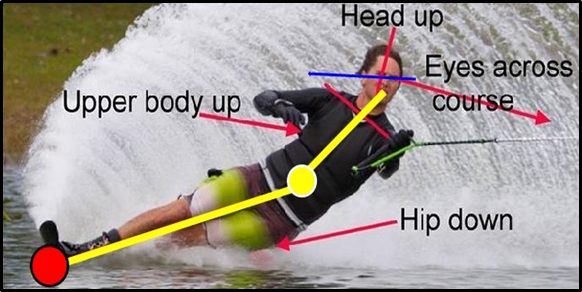
For the fourth example, I like to use, is a surfer. Once again notice all four key point are relatively the same as all the previous examples.

The concepts used by athletes is also commonly used in the animal kingdom. In these examples you can see that the same four points apply to a running animals.
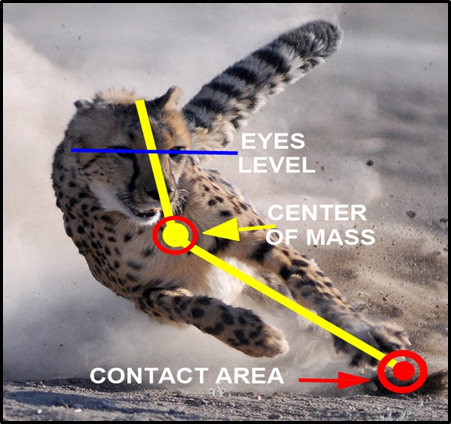
Even in this silly photoshopped picture (ignore the rider LOL) you can see the same four points.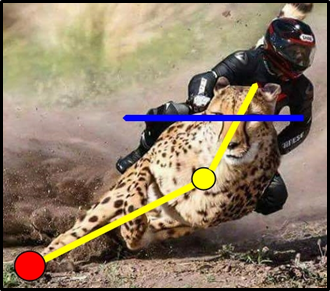
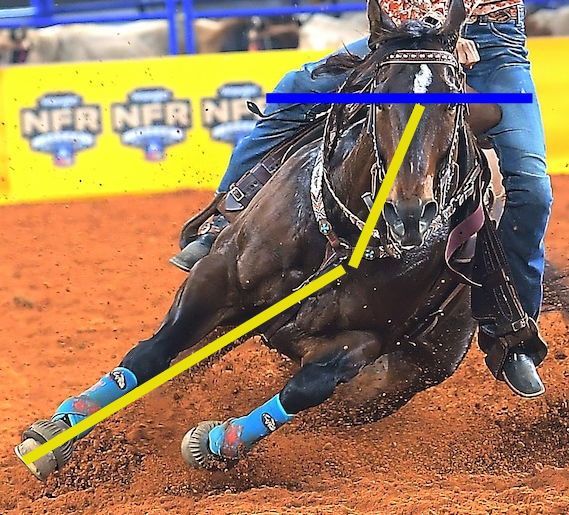 In the photos above, all the examples they were moving their center of mass into the direction of the turn and all the examples had their eyes level with the horizon.
In the photos above, all the examples they were moving their center of mass into the direction of the turn and all the examples had their eyes level with the horizon.
Let’s Look A Motorcycle Racer.
In this example, the rider is in a standard or “Conventional BP” for a road course sport-bike. His center of mass is moved to the inside of the turn.
Notice the similarities between him and the previous examples. You can see the four points are the same. Plus, a good arm position for precise control of the bike.
This conventional BP accomplishes the same goal as the “new style” BP. Plus it is in line with human ergonomics.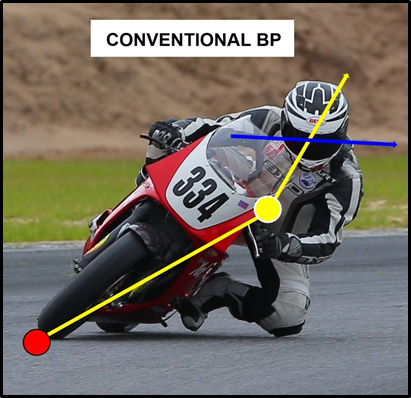
Here’s a photo of a Motocross racer. He is also in a conventional riding position. Even thought his is using the deep ruts to his advantage, notice the four points. Some would use the derogatory term “Crossed Up” to try and downplay this BP if they saw it on a sport-bike.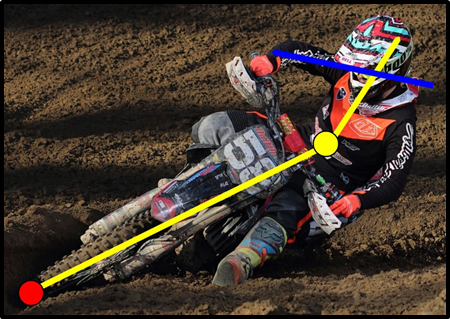
Notice the similarity between the relationship of all the four points of ergonomics, shown above.
But, for some reason, known only to the current batch of, “New Way of Thinking”, coaches, they are teaching the new riders that they must ride like this extreme example. 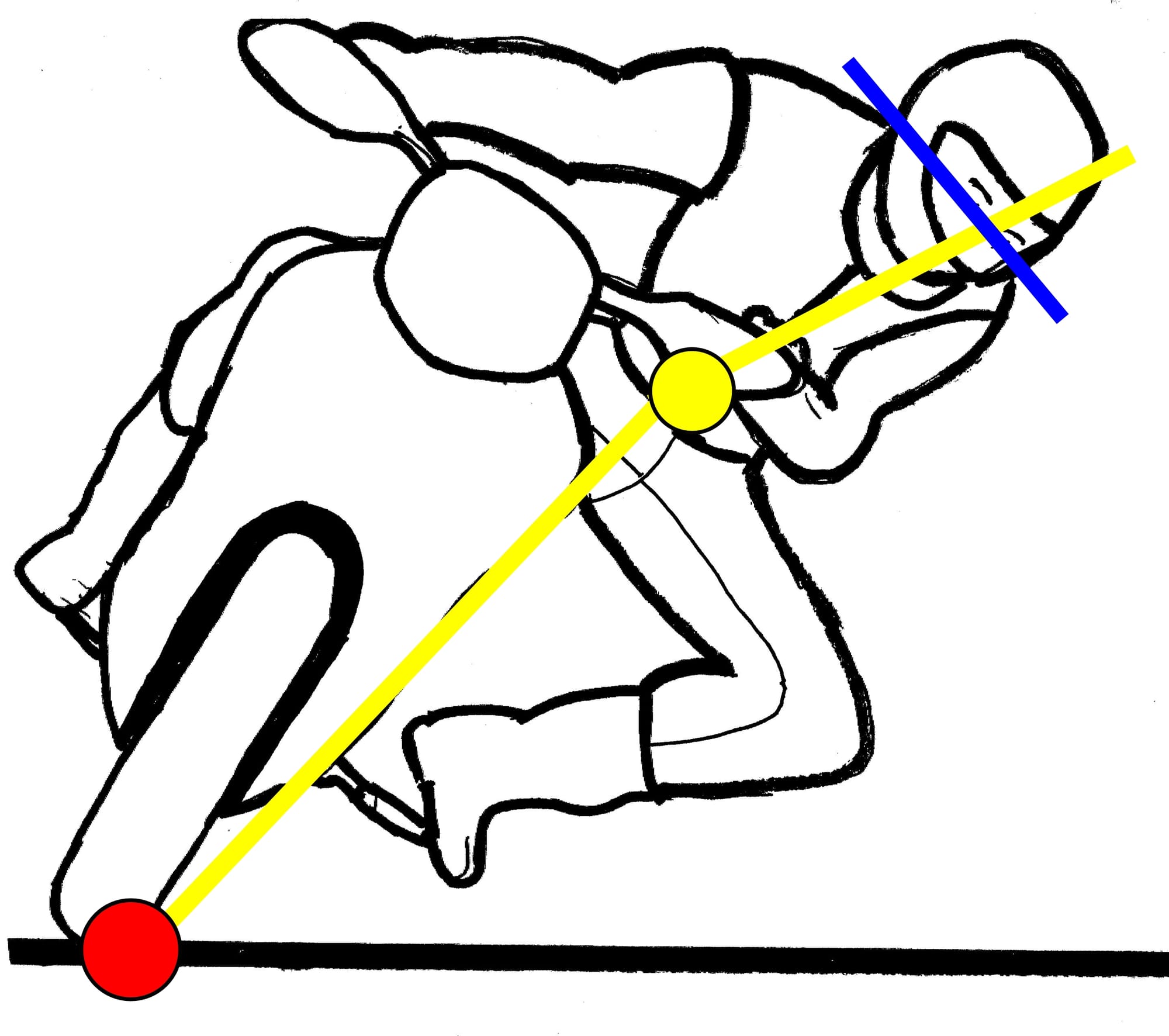
The question now is why, “Why would a paved road course racing be the only form of competition that requires this extreme BP”. Even dirt riders don’t use this style to turn the bike. It is true the M/X BP example shown above is not the only BP that they use, but they never use this backward and truly "crossed-up" style in the dirt, other than maybe a quick correction maneuver.
The straight out right arm position looks awkward and imprecise for good control. The eye position is awkward to say the least. For a test, try running, jogging down a trail or walking down the stairs quickly with you head in this position. It is an unnatural head and eye position for humans.
By my definition this style is the true “CROSSED UP BP”.
One Last Point to Think About.
Marquez’s style is often used as a justification of this extreme BP. But If you look close at his photos you will see there is a big difference between his style and the extreme one shown above.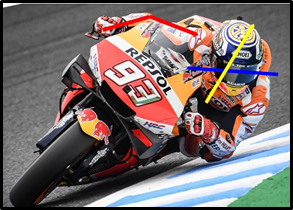
"Just Food for Thought”